Located in Northwestern United States, Yellowstone is an incredible national park famous for its geysers, hot springs and wildlife. Yellowstone spreads out between Idaho, Wyoming and Montana. It was established in 1872 as the first National Park in the United States! You can easily spend a day driving through the park, or a week exploring the vast wilderness. That is why, we have put together a 1 day travel plan starting at the Yellowstone east entrance to the northeast entrance.
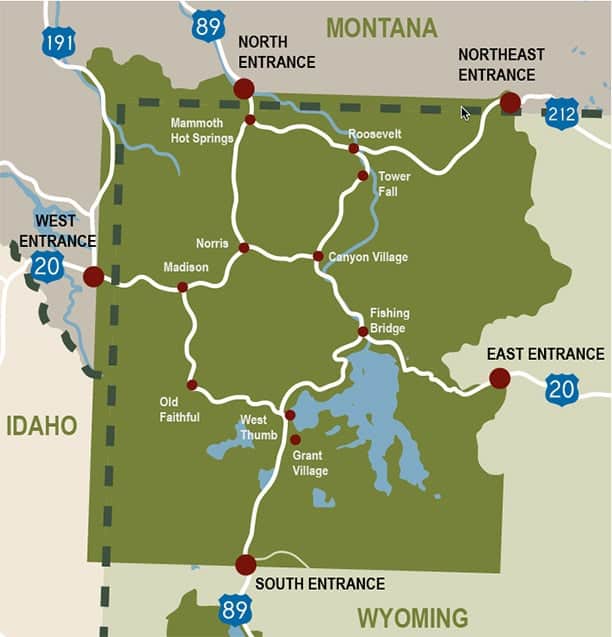
How to Best Visit Yellowstone National Park
Parks Pass
To enter a National Park, you will need to pay a $35 fee at the entrance. If you plan to visit more than a couple parks in a year, you can purchase the America the Beautiful national parks season pass for $80.
Packing
For a complete camping packing list, click here. It is important to be prepared for the terrain and wildlife in Yellowstone National Park. Along with a camping packing list, we’ve put together an Outdoor Adventure Favorites list with convenient shopping links. It includes items like paddle boards, bear spray and bear bells, and other incredible products that are great for a Yellowstone!
Visit the Shop our Favorites page for links, and simply scroll down the page for the Outdoor Adventure Favorites section. Items can be purchased from Amazon, shipping in as little as a day if you have Prime.
Some articles on The ExplorList contain ads and affiliate links. If you plan on buying or booking something I’ve recommended, please consider using my links, which help power this site at no additional cost to you! To learn more, read our Privacy Policy.

6 Must See Spots Starting at the Yellowstone West Entrance to the Northeast entrance
1. Grand Prismatic Spring
2. Old Faithful Geyser
3. Hayden & Lamar Valley
4. Grand Canyon of Yellowstone
5. Continental Divide
6. Mammoth Hot Springs
1. Grand Prismatic Spring

The Grand Prismatic Spring is one of the most picturesque spots in the park. It is one of the largest hot springs in the world, measuring about 370ft in diameter and 120ft deep.
Located near the west entrance, there are two ways to view this geological wonder. You can either walk the Midway Geyser Basin Trail , a .7 mile loop trail and see the spring up close. Or get a beautiful aerial view by taking the 1.5 mile out and back trail from Fountain Flat Drive to the Grand Prismatic Spring Overlook.
The best times to visit the spring are from April through October. This is a popular spot because of the surreal colors of the spring, and its enormous size. Smaller, but just as beautiful springs surround the area and the boardwalk makes it easily accessible. Parents should be mindful with younger kids since some of the boardwalk does not have railings. Because of its popularity, it is wise to visit during a weekday or in the early morning.
When we visited Yellowstone National Park, we entered at the West Entrance and drove 45 minutes to The Grand Prismatic Spring. The Spring was our first stop in the park, located in between Madison and Old Faithful. We took the Midway Geyser Trail which started by crossing the Firehole River. Streams of steaming water poured into the main river giving it a magical feel.
It was an overcast day when we visited, so unfortunately the Grand Prismatic Spring was clouded from the steam. We weren’t able to view its grandeur, which was a bummer, but we really enjoyed learning about it and seeing the gorgeous smaller springs in the area! Opal Pool (pictured above) was stunning, and a smaller version of the Grand Prismatic Spring.
2. Old Faithful Geyser
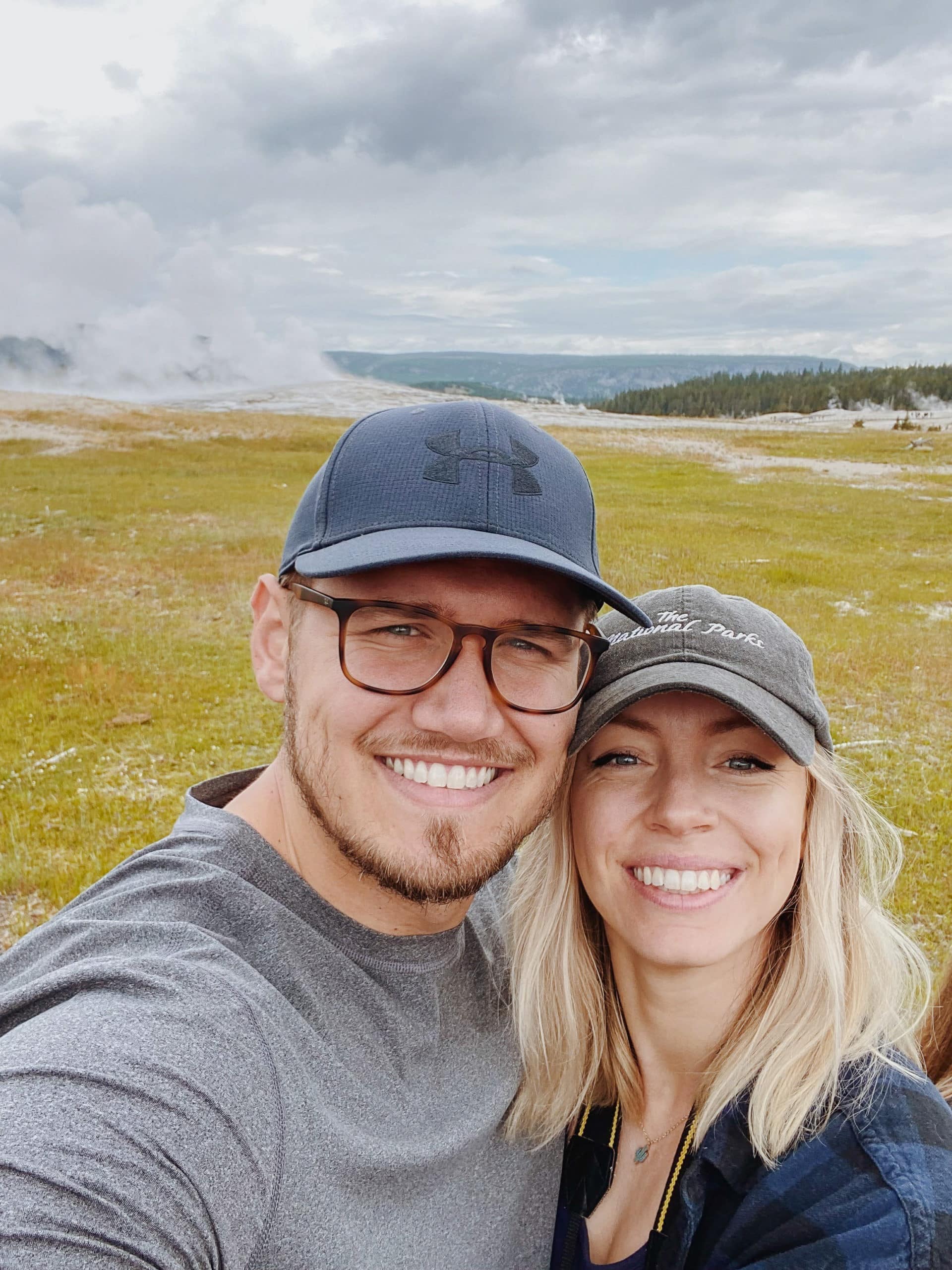
In the southwest section of Yellowstone National Park is the famous Old Faithful geyser. Old Faithful was discovered in 1870 and named for its frequent eruptions. The geyser is located near the Old Faithful lodge, which is a great stop to grab a coffee, a bite to eat, or souvenir shop while you wait for the geyser to erupt. Eruptions occur around 20 times a day with intervals of 60-110 minutes. There are many benches surrounding the geyser and they start to fill up 20-30 minutes before the next eruption.
The ranger station tracks the timing, so you can check in when you arrive. There are trails around the area that you can visit to see smaller geysers while you wait. We didn’t mind waiting and thought that part of the fun was being there with the crowd. People started a crowd wave which was a fun and it was enjoyable to hear the excitement from everyone when the geyser erupted. Eruptions are 106-184ft tall, and it can take a minute or two to get to full height so don’t leave too quickly!
3. Hayden & Lamar Valley

The sanctuary Yellowstone has become is truly astounding, the park has been able to protect species and increase healthy numbers of bison, wolves, etc. Viewing these incredible creatures will definitely be a highlight of the trip.
Hayden Valley is a great place to spot wildlife in the park. You can stop on the side of the road or spot animals as you drive. The best time to see animals in the park is dawn and dusk. We passed through mid afternoon and saw bison and elk, but in the past I’ve spotted coyotes, bears, and even a wolf. It’s best to visit the valley spring through fall, when the park roads are open and accessible.
Lamar Valley is on the East side of the park, and a great stop if you plan to exit through the North-East entrance. It is accessible by vehicle year-round. Lamar is rated as one of the best places to see wildlife in the park. Bison can cause long jams in the road if a herd is crossing, so I recommend bringing snacks and things to do in the car for any kiddos. The bison will move at their own pace so sometimes jams can cause long delays. The best time to see wolves is during the winter from February to March.
4. Grand Canyon of Yellowstone

The Grand Canyon of Yellowstone is an inspiring sight that should not be missed. Yellowstone Falls can be viewed from several points via car or hike, on the south or North Rim. We chose to view the falls from Artist Point. One of the most photographed points in the park, the yellow and white earth contrasts beautiful blue and green tones, making it a true work of art.
We walked the .2 mile, out and back trail to Artist Point, while it was raining and overcast. The trail is not paved, so be sure to wear closed toed shoes. It was a quick downhill walk to the lookout point and the clouds opened up to reveal the falls.
Weather can be unpredictable in Yellowstone National Park, so be prepared for surprises! When we were viewing the falls, a thunderstorm rolled through and we had to take cover. The ground was flooding around us, but thankfully we were able to quickly make our way back to the parking lot without getting trapped. The best time to visit Artist Point is May through October, and especially in the morning when the light shimmers on the water.
5. Continental Divide

This may not on everyones to-do list, but we were pleasantly surprised when we came across the continental divide in Yellowstone National Park. Later, we learned that there are three spots in the park where you can be on the continental divide.
A continental divide is a natural drainage divide that separates the continents river system. Each side feeds into a different Ocean or Sea, or is endorheic (not connected to the open sea). This natural occurrence isn’t as publicized, but I found it interesting to learn about and enjoyed stopping to relax near the river. The river was covered in lily-pads with bright orange flowers. If you have been in the car for a long time, this would make for a fun picnic break. If you’re lucky, you might even sight some otters in the river.

6. Mammoth Hot Springs
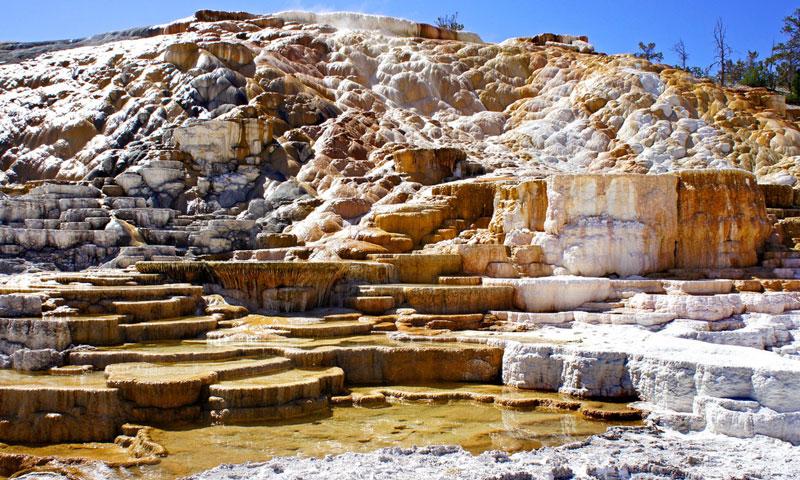 Photo © Steve Mattucci – Flickr
Photo © Steve Mattucci – Flickr
Mammoth Hot Springs is located near the North entrance of Yellowstone National Park. We planned the trip to exit through this entrance, so it was our last planned spot to see. To view the hot springs you can walk around the 1.75 miles of boardwalks on Upper and Lower trails. You can plan for just over an hour to see the springs from multiple viewpoints.
These unique hot springs are made of travertine (calcium carbonate), deposited there by dozens of hot springs in the area. The terraces are said to resemble a cave turned inside out and have eye-catching white layers that form one on top of the other. This is definitely a must do in the park.
We hope you enjoyed the 6 Must-See Spots in Yellowstone National Park! If you are ready for your next adventure, check out our blog full of incredible destinations. If you are planning a multi-National Park Trip, check out our 3 Day Itinerary to Glacier, just north of Yellowstone.


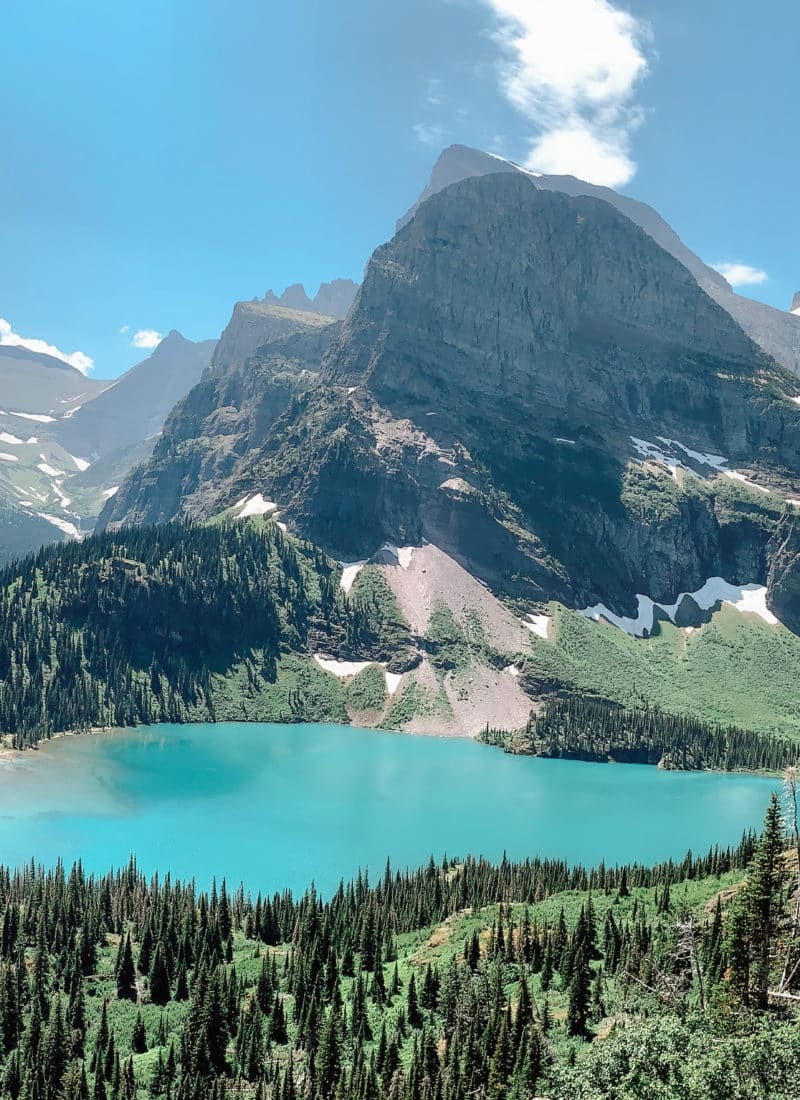
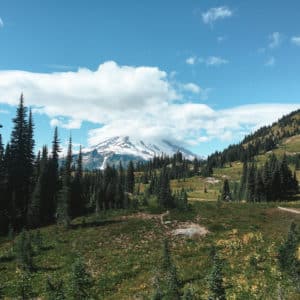
Leave a Reply